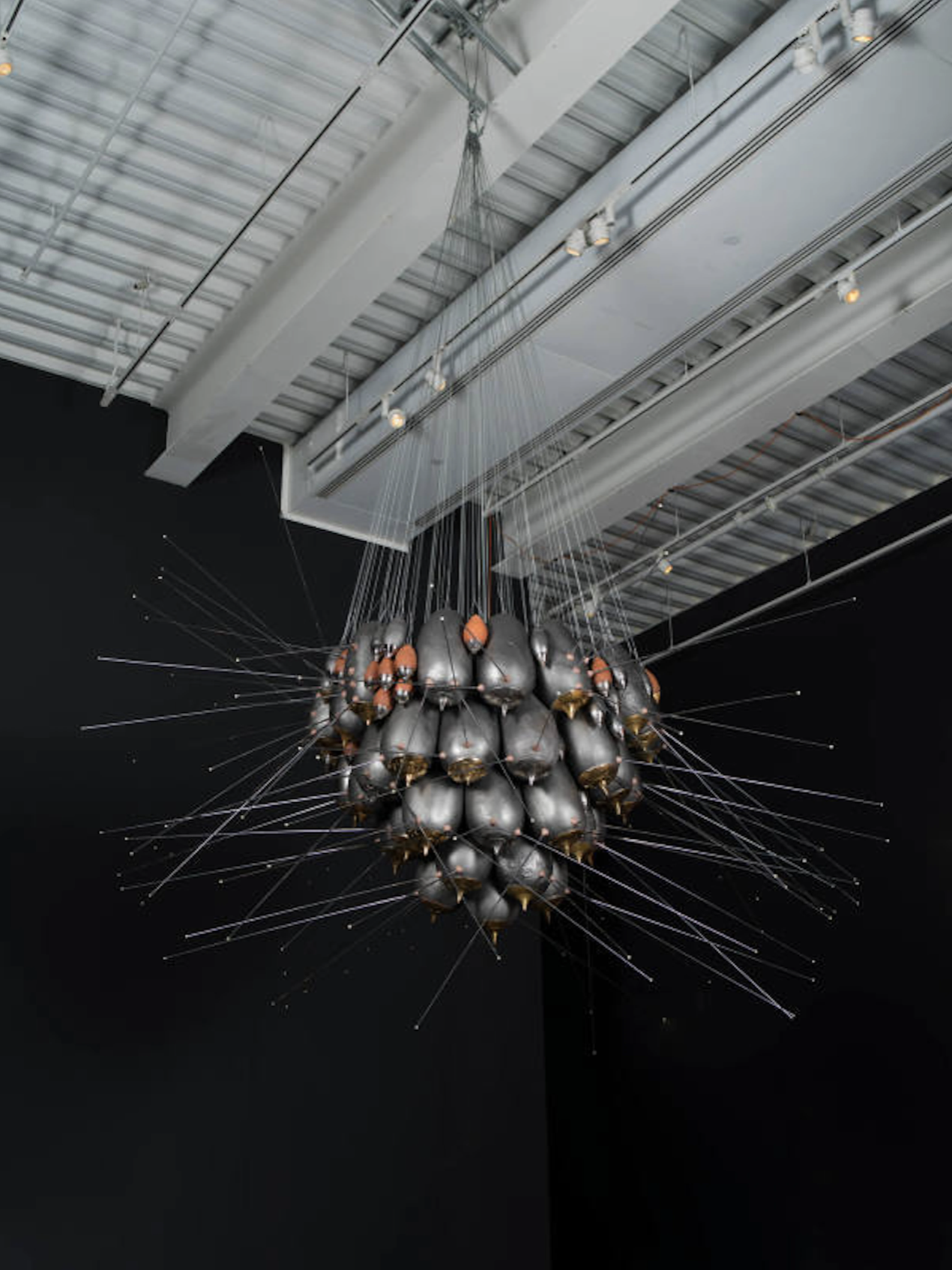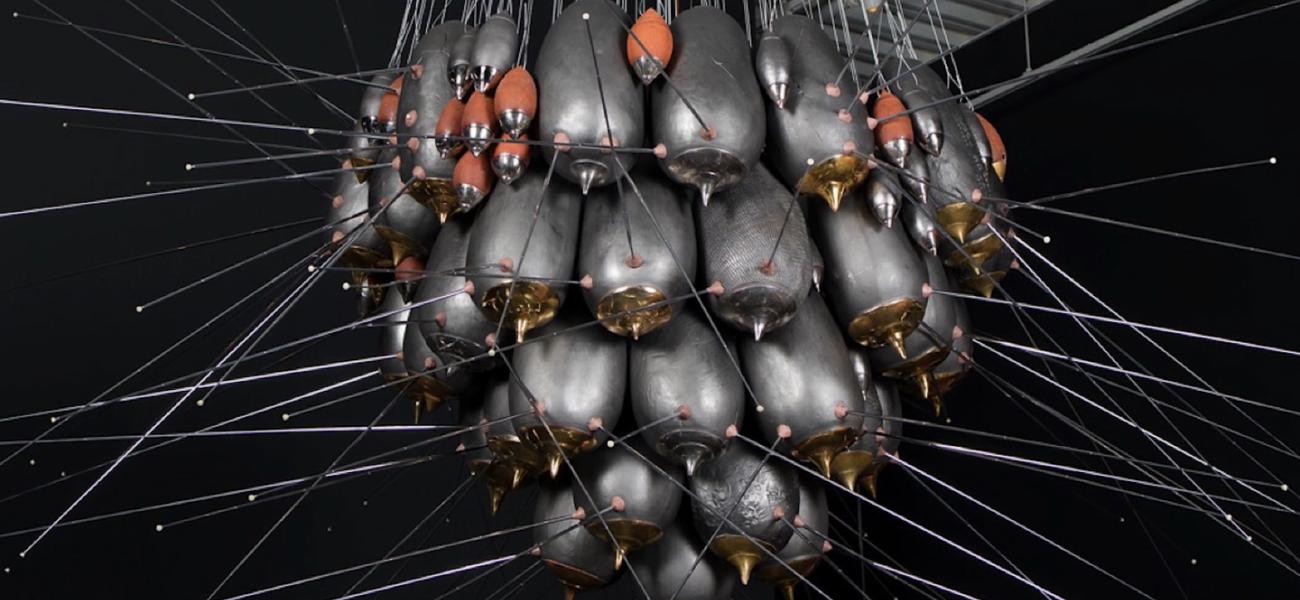How do bees feed together and survive food insecurity? Trophallaxis. Trophallaxis is the biological exchange of chemicals from one organism to another for feeding, communication, and immunity. Labor, protection, and morbidity are part of this term, as they affect both larvae and adult-to-adult feeding.

The Simone Leigh work bearing the namesake of this principle, trophallaxis, is a part of sustained investigations of chandelier-like work and the idea of breasts as vessels: Emperor Jones (2009), Queen Bee (2008 – 2012), Kool-Aid (2012), You Don’t Know Where Her Mouth Has Been (2012), and Invisible Manish (2015) are examples of this type. The chandelier mount displays the breasts from above, where the viewers' experience is from below, an infant’s view, revering them as a source of life and nourishment, or perhaps, showcasing them as receptacles or spectacles. This view both glorifies them and bears the memory of the display of Black women’s bodies, like the history and legacy of Sarah Baartman, an enslaved African woman who was taken to Europe in the nineteenth century to have her body put on display in freak show, carnival, and human curiosity attractions.

